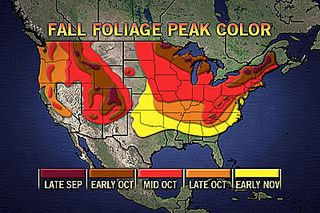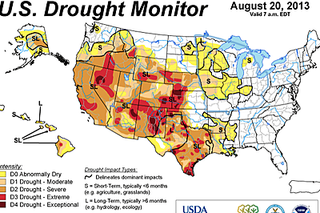Fall Foliage Forecast: Best Chance for Vibrant Display in Mid-Atlantic

This article was provided by AccuWeather.com.
As summer comes to a close and fall weather ushers in the changing of leaves, this year's most vibrant display of foliage will occur across the mid-Atlantic. Meanwhile, surrounding regions may be hindered by flooding rain and unseasonable temperatures.
"Most important is really what happens at the end of September and beginning of October into the middle of October. That's really the crucial period," according to Dr. Marc Abrams, professor of Forest Ecology and Physiology at Penn State University.
Abrams began observing how weather conditions affect fall foliage more than 25 years ago.
The AccuWeather.com 2013 Fall Forecast predicts near normal temperatures and precipitation for the mid-Atlantic region, allowing bright, colorful leaves.
Meanwhile, those farther north may be somewhat disappointed. The Northeast is forecast to remain warmer than normal this fall.
Through September and October, temperatures will average 2 to 3 degrees above normal in upstate New York and New England, Lead Long-Range Forecaster for AccuWeather.com Paul Pastelok said.
Sign up for the Live Science daily newsletter now
Get the world’s most fascinating discoveries delivered straight to your inbox.
Cold isn't anticipated to return until some time in November.
"That's going to be problematic. It's going to delay the peak coloration, and normally when we have warm falls the peak coloration is not the best," Abrams said. "Those cold temperatures are really, really important late September, early October."
RELATED: Forecast Temperature Maps AccuWeather.com 2013 Fall Forecast Midwest, Southeast to Bear the Brunt of Fall Allergy Season
Cold temperatures will not be in short supply for the Midwest, where an early frost/freeze is forecast in October.
A hard freeze while leaves are still green will transition the leaf straight to brown, rather than allowing multiple colors to come out. It may also delay the peak of the season, Abrams said.
A frost, on the other hand, could be beneficial for the region.
"A frost helps to bring out the color. What happens is that the chlorophyll - which causes the green color of leaves - starts to break down. This basically exposes the other pigments like red and orange," Abrams said.
Leaves in the Southeast will struggle to change color this year, as the region continues to be hammered by flooding rains into the fall.

A deluge will help the leaves stay green. A mild drought in late September and early October would have been more conducive, helping to move the the leaves into senescence, Abrams said.
Extreme drought can thwart fall colors, however, impacting the leaf size, vigor and physiology.
Much of the western half of the nation continues to be gripped by moderate to exceptional drought, particularly along the Rocky Mountains, the primary color-producing area of the West.
© AccuWeather.com. All rights reserved. More from AccuWeather.com.
With much of the country experiencing an unseasonably warm winter, fears of climate change come to mind. See how well you understand recent weather, climate and the difference between them.
Pop Quiz: Sign of Climate Change, or Just Weird Weather?

